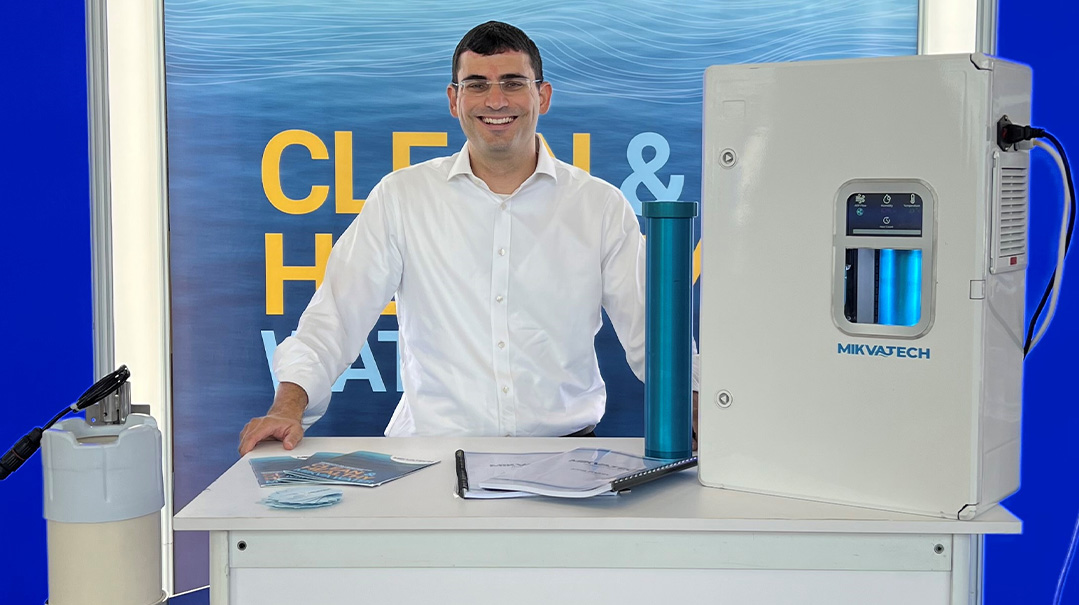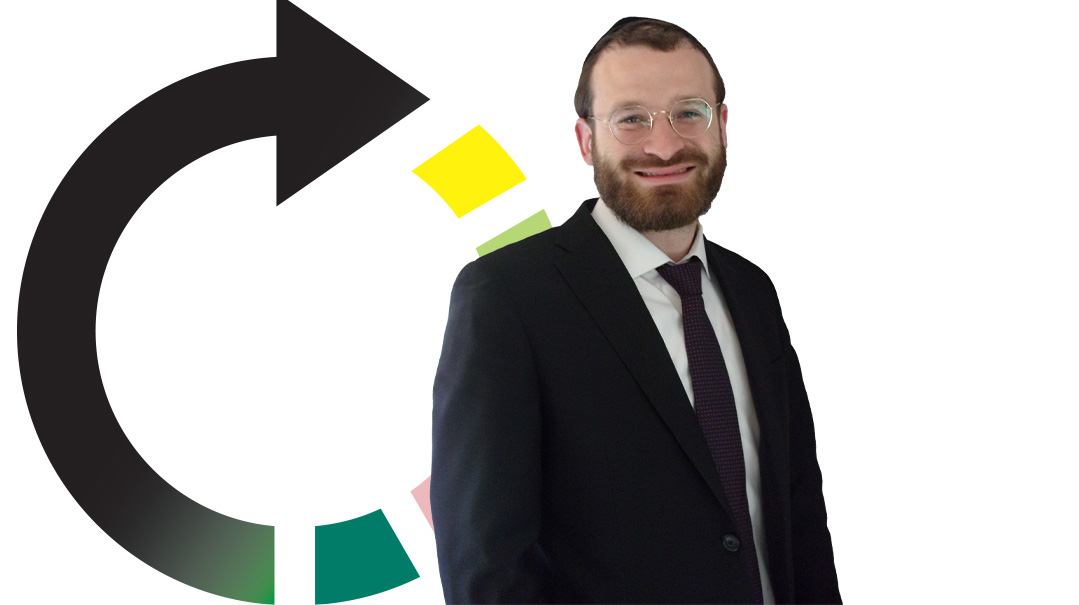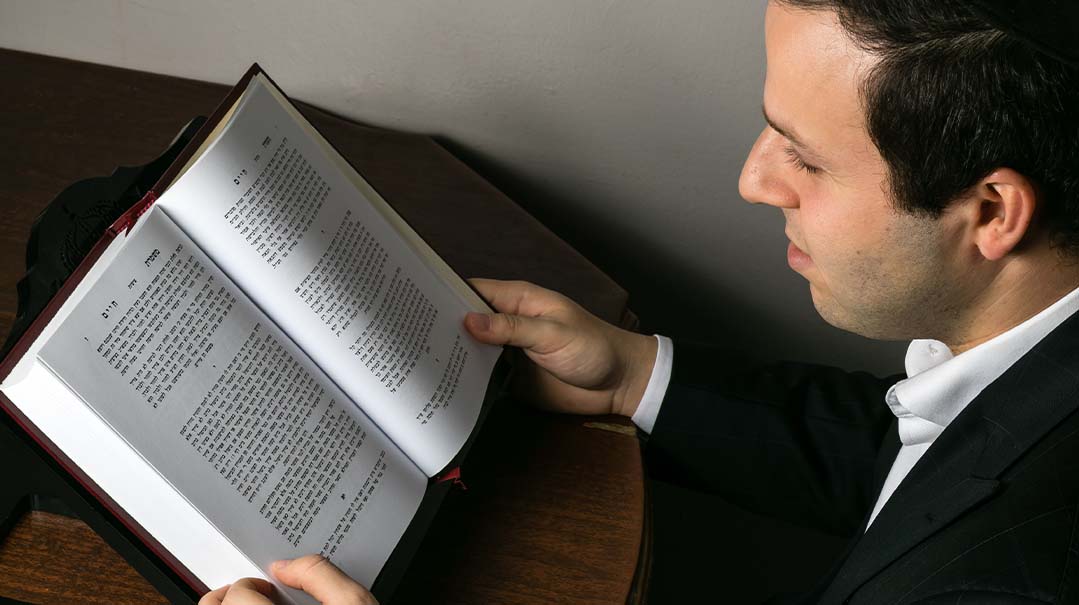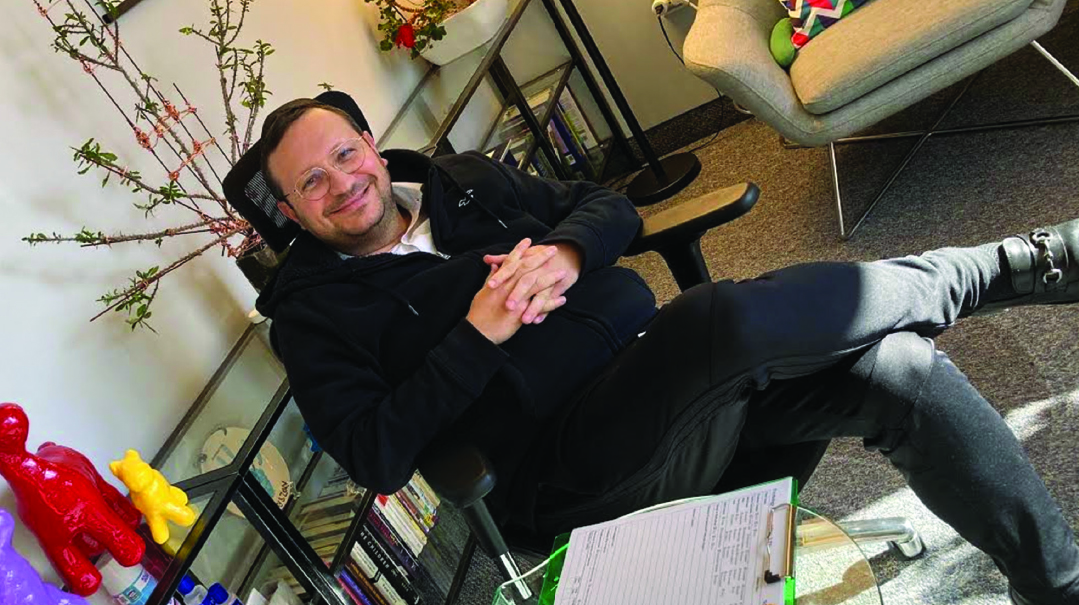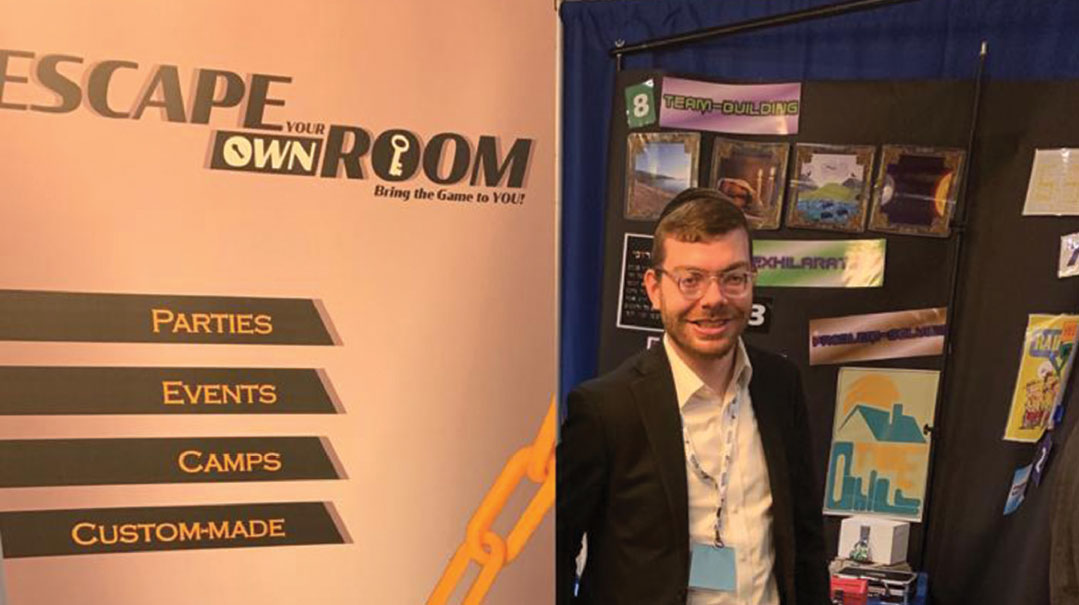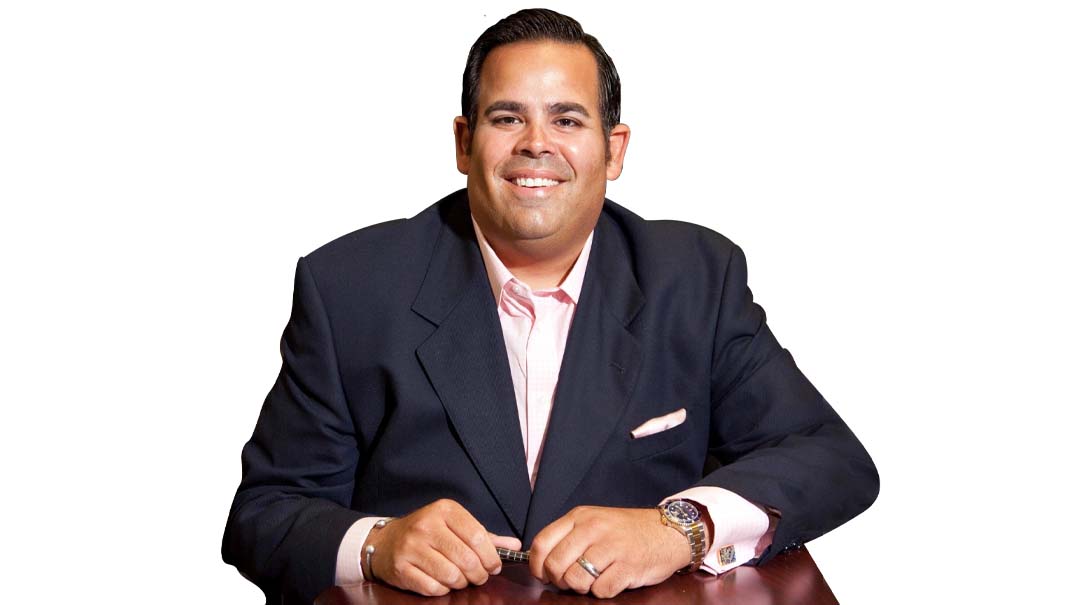Set It and Forget It

Can your smart home tech master halachah, too?
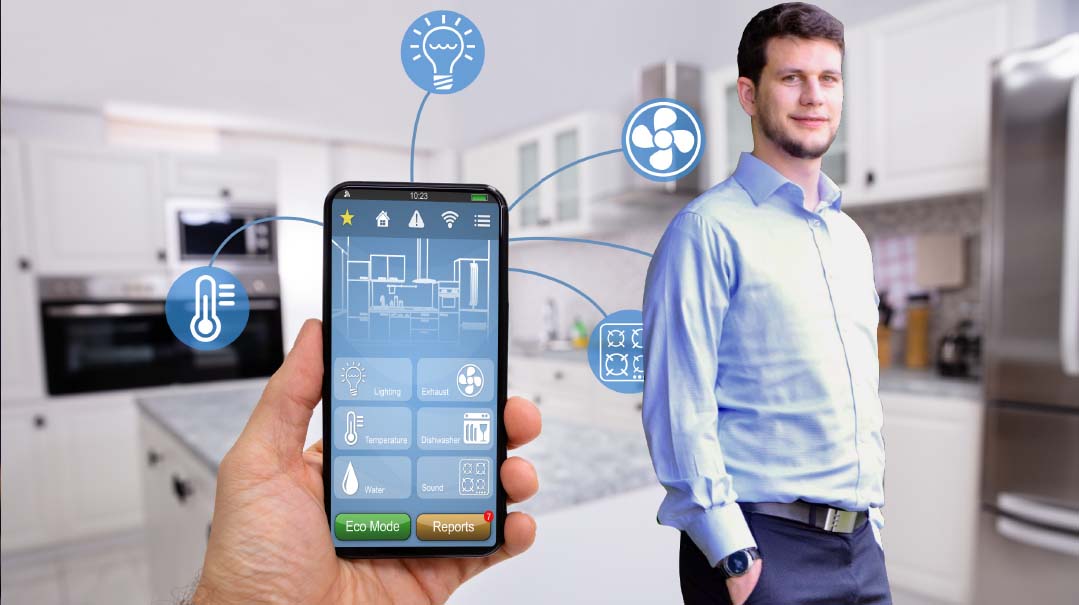
Efraim Vaynman is the founder of Automated Abode, a home automation company. He lives in Passaic, New Jersey
What I do
I am a home automation specialist. My company, Automated Abode, specializes in systems integration — I’ve been at it for three and a half years.
What that means
I install, program, and support the technology found in homes — smart lights, smart thermostats, audio visual equipment, networking, security systems, and more. Smart homes are homes that — you guessed it! — make use of smart devices. And smart devices are devices you can control from a phone or computer or from the cloud. This control gives devices flexibility in the scope or extent of their operation. Take a smart light for example: You can control it from something other than the actual light switch, say your phone or voice assistant, and with those external controls, you can set the light on a schedule, change color, dim it, and more. Now imagine this kind of flexibility for all kinds of different devices in your home: cameras, thermostats, locks. What I do is integrate these systems so they interact with each other and can be controlled centrally from your phone or computer.
How I got started
I was always technically inclined — I was learning coding at age ten. When my wife Dvorah and I bought our first home in 2016, I began tinkering with smart home devices. At the time, I was working as a systems administrator, automating business and administrative processes for my employer. It was a great introduction to the tech field, but I’d always wanted to do something that allowed for more creativity and leeway and growth. Meanwhile, I was playing around with smart devices at home, and we quickly realized this tinkering had enormous potential. Smart home products were more affordable, demand was rapidly increasing, and demand in the frum community was particularly high because smart home devices make it easy to incorporate Shabbos and Yom Tov schedules into your home systems and appliances. Here was an opportunity — to automate private residential systems, providing people with smart home integration. So one day, I told my wife that I thought it was time to quit my job and launch my own business. We took the leap, and Automated Abode is now a full-time job — and then some!
In the beginning
I had to do a lot of research exploring the benefits and drawbacks of the growing number of products in the field — how they could be modified or adapted for Shabbos, for example. Smart thermostats seem pretty innocent, don’t they? Look a little closer and you’ll find potential issues: presence detection may cause the HVAC to turn on or off, screens may change as you walk by. Many of our clients ask about this issue, and I had to research which products had settings I could use to disable those sensors and functions.
How it works
I set up a smart home controller, a hub that controls all your devices. The hub is aware of Shabbos and Yom Tov, and once you integrate your devices to the hub, you program them to accommodate Shabbos and Yom Tov schedules: having the fridge and oven turn on Sabbath mode automatically on Erev Shabbos, turning the hotplate on two hours before mealtime, turning on the white noise machine for the baby’s bedtime, and disabling a security camera’s motion sensor. The wonderful thing about home automation is how personalized it is — you tailor your home to your needs, your schedule, your quirks.
Special programming
Some devices have halachic issues it seems you can’t work around, but there are creative solutions. For example, you can often install a smart relay that “kashers” it either by turning it off completely or turning off part of it, like a contact sensor on a door. Take Alexa — it’s so easy to unintentionally trigger the speaker, and the next thing you know, there’s music at the Shabbos table. And Nest hubs with screens, which changes and lights up when you walk by. Unplugging these each week is impractical, and sooner or later people find they forget, but if you have them set to be off entirely for Shabbos and Yom Tov, it isn’t a concern.
Tweaks based on user feedback
My system is programmed to use the online Jewish calendar HebCal. It worked well for a while, but there was this one issue — on Chanukah, the calendar event of candle-lighting confused the system with Shabbos candle-lighting, triggering the home’s Shabbos mode. This led to a few frantic calls and emails about clients’ smart homes going into Shabbos mode unexpectedly. I reached out to the HebCal developer, who was kind enough to change the programming within the calendar to differentiate between the two types of candle-lighting calendar events.
What I wish everyone knew
Too often I encounter people who don’t fully understand how a device works and its Shabbos ramifications. Some smart doorbells or cameras, for example, have infrared lights or LEDs that change or turn on when someone approaches — many people don’t notice this. I tell people to do their research or consult with someone who has before incorporating new technology into their homes.
My clientele
Most of my clients are based in New Jersey and the greater Tristate area, because most of my jobs come from word-of-mouth referrals. There is high demand for our services in the frum community, so I do most of my work there, mostly private residences but also shuls. In a large commercial space like a shul, automation is not just a convenience but a real money-saver. Lights, for example, are often not managed efficiently; they stay on longer than necessary unless a shul has a full-time custodian. With automation, you can adjust the lighting and HVAC times to the constantly changing schedule of a shul by syncing the lights and HVAC with the shul’s online calendar. For example, in one shul, I programmed the lights and HVAC to turn on automatically a few minutes before davening, while the lights at the amud and aron turn on at the exact scheduled start of the tefillah. The system adjusts itself as the times for tefillah change, including Shabbos and Yom Tov. This not only saves the shul money but also avoids the all-too-common oversight of forgetting to properly adjust one of the lights or thermostats for Yom Tov.
Creative uses
It’s not just for Shabbos and Yom Tov, shuls can use automation all week. When the last person leaves on a weekday, he presses just one button to turn off all of the lights. The shul’s ballroom also has its own events calendar, to schedule the lights, HVAC, and audio system. When the system detects an event in the Google calendar, the lights and HVAC turn on an hour and a half before the event starts and an hour after it ends. The shul administrator doesn’t have to be there, he just has to schedule the event in the calendar.
Equipment I always carry on me
A carful of tools: an impact driver, hammer drill, reciprocating saw, multi-tool, rotary tool, soldering iron, network termination kit, multimeter, and two dozen other smaller tools. My job is an odd mix of physical and computer work; I do the prewiring on new homes, cut into drywall to install speakers or flush-mounted tablets, notch out studs when needed, and build framing for added support. My most important tool is my phone, which allows me to program devices on-the-spot, as soon as I install them. I use it to test Wi-Fi signal strength and network connectivity, I print labels from it, it connects to some of my tools, I use it to invoice clients and accept payments — it’s really essential for my job.
Off site
I also work remotely, directing clients on how to install the devices, and then I program them from here. One client from Albany wanted his fireplace to turn on depending on how cold it was outside and to have his ceiling fans adjust their speed based on the temperature. The difficult part of home automation isn’t installing the devices but programming them in a customized and dynamic way, which I can manage remotely.
Ask the rabbi
There’s a wide range of opinions when it comes to technology use on Shabbos, so I encourage my clients to ask their own rav for a psak about what we can program for their smart home. I’ll inform them of the various potential issues and sometimes tell them about the different opinions, but I avoid telling them what they should do.
Most memorable feedback
I once installed water leak sensors in a client’s basement and programmed them to communicate with the house so that if a leak is detected, phones are notified and the house speakers alert the homeowners, too. Lo and behold, a leak in their basement soon triggered the sensor, and their speakers immediately announced, “Alert, there is a water leak in the basement.” I’ll never forget when they called to express their gratitude. It’s always encouraging to hear that people feel more comfortable, safe, and protected in their smart homes.
How I came up with the name
I was going for a clever alliteration that clearly articulated what the business does. It worked out nicely with our logo, which is a home formed by two As with a Wi-Fi signal. But considering that people still sometimes call the company Automated Adobe instead of Automated Abode, I’m wondering if it’s as clever as I’d hoped. I wonder what they think I do?!
(Originally featured in Mishpacha, Issue 881)
Oops! We could not locate your form.
